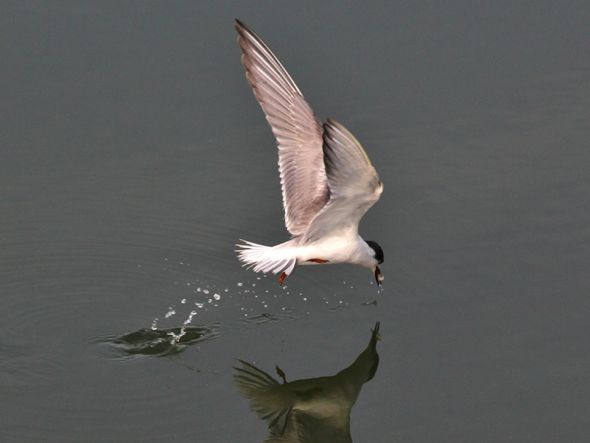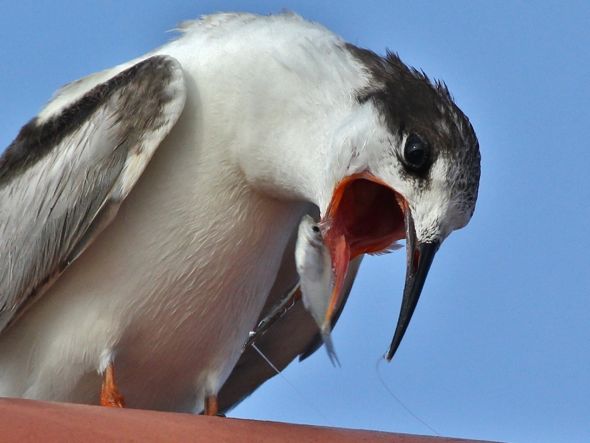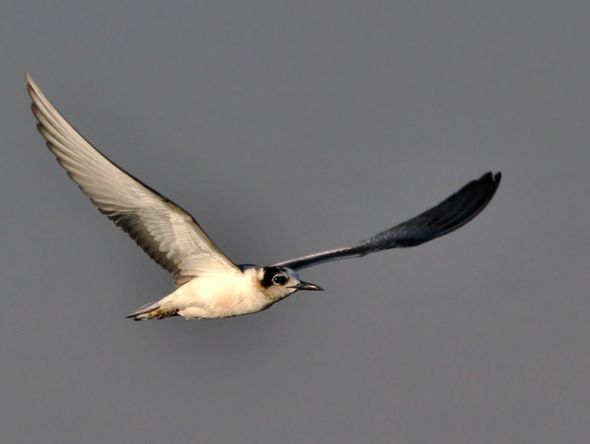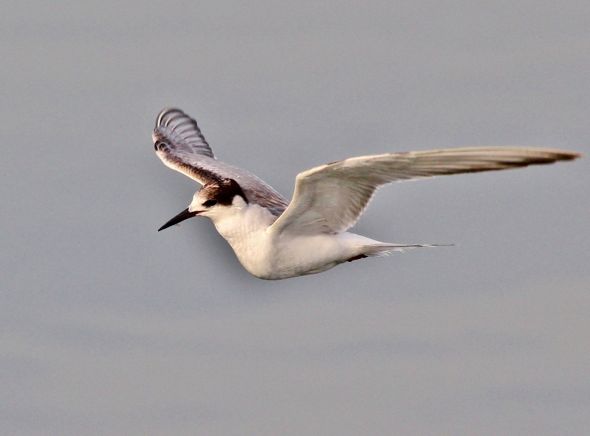“Spanning across Serangoon Reservoir to link Lorong Halus Wetland to Punggol Waterway, the new 170 metres long Halus Bridge is now aged more than 18 months old. I was there a few times end October 2012 and find the pedestrian bridge, which was officially open in March 2011, a good place for tern watching. Every now and then, terns foraging for fish will fly over the bridge to provide watching pleasure. At least three different species of terns were spotted, but probably more as identify all of them was beyond me as they looked quite similar in their non-breeding plumage. However, from my limited knowledge, I can tell that there were Little Terns (Sterna albifrons), White-Winged Terns (Chlidonias leucopterus) and Whiskered Terns (Chlidonias hybridus).
“A particular Whiskered Tern caught my attention as it was spotted on top of the steel structure that was part of the bridge. It was perched at about 3 metres heigh from the floor of the bridge, where many human visitors were trekking across (top). Most were unaware of its presence and walked past without noticing it. Some noticed the tern and stopped to admire it – for it is indeed rare to encounter one that is so close. Ignoring the human presence, this individual was calm and relaxed, and remained up there with no sign of bolting away. From this high vantage point, this individual will later make a few sorties to catch fish. Unlike the Little Tern which plunge-dive into water to make its catch, this Whiskered Tern hardly make a splash as it swooped down to skim just above the water surface and lowered its head for its catch. The actual catch was executed skilfully and with precision (above). Quick as lightning, only its bill entered the water and was withdrawn out immediately with a fish clamped in between. The fish will either be swallowed in flight or be brought back to the bridge, where it will be manipulated before being swallowed.
![TernWhisk vomit-fish [KwongWaiChong] - 3](https://besgroup.org/wp-content/uploads/TernWhisk-vomit-fish-KwongWaiChong-3.jpg)
“During a lull period of inactivity, this tern was resting on the bridge when I noticed it behaving strangely. Its neck was stretched and extended, and swaying side-to-side. It then opened its bill and gaped widely. After a few seconds, its bill remained gaped as it bowed down its head (above). Thinking that it was about to cast a pellet, I was clicking away furiously. True enough, an object was soon ejected out from its throat (below). With neck still extended, the tern looked sheepishly down at the object that had just been ejected. Slowly, it regained its composure and resumed its relax posture.
“As the projectile was thrown out with speed, the object cannot be clearly seen. To identify the object, I had to check from the captured images. What a surprise! Instead of a pellet, it was a fish that was still in one piece (above)! For some unknown reason, food that was consumed earlier had been vomited out. Could the tern be sick or was it indigestion? I have no idea.
“While most terns would fly with their heads in alignment with their bodies (above), I noticed this tern sometimes had its head raised higher than its body during flight (below). I wonder whether this could be an abnormal condition? There are other possibilities. It could be due to fish being ingested. Or could it be caused by the extra effort needed to escalate in height as it climbed to clear the structure of the bridge?”
Kwong Wai Chong
Singapore
11th November 2012













